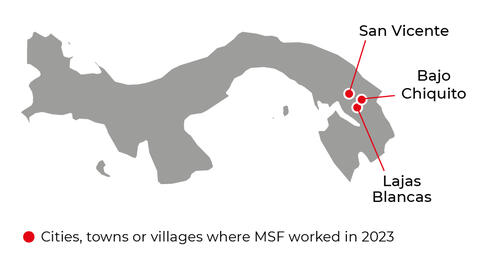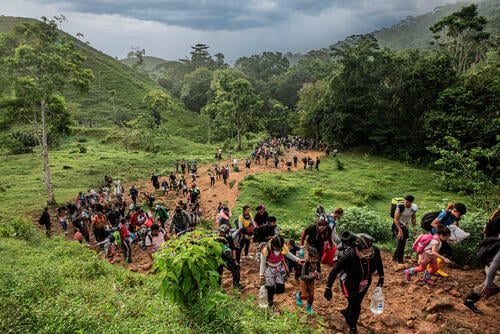Over 520,000 migrants crossed the Darién Gap last year,* on their way north to Mexico and the United States, in search of a better life. This was the highest number recorded to date, and more than double the figure for the previous year.
After negotiations with the authorities, our teams were permitted to return to the Indigenous community of Bajo Chiquito, the first village migrants reach after making the crossing into Panama, a perilous journey that can take 10 days or more. We immediately started to support the Ministry of Health health post in the village so that victims and survivors of sexual violence could receive the urgent attention that is critical to ensure effective treatment. As well as providing care to hundreds of victims, we continued to raise the alarm regarding the huge increase in sexual assaults.
Our teams also offered medical and mental health care to people who had been victims of physical assaults, threats and robbery by criminals in the jungle. Some patients had sustained injuries as they travelled across the treacherous terrain, or had developed skin, gastric or respiratory diseases due to poor access to food, water and shelter.
There were many vulnerable groups among patients, including young children, older adults, and people with disabilities or previous health conditions.
In 2023, 63 per cent of the migrants came from Venezuela, 11 per cent from Ecuador and 8.9 per cent from Haiti. There is also significant migration from other continents, including 8.15 per cent from Asia.
As in previous years, we publicly called on governments in the region to ensure safe migration routes and take effective measures to protect migrants from violence.





